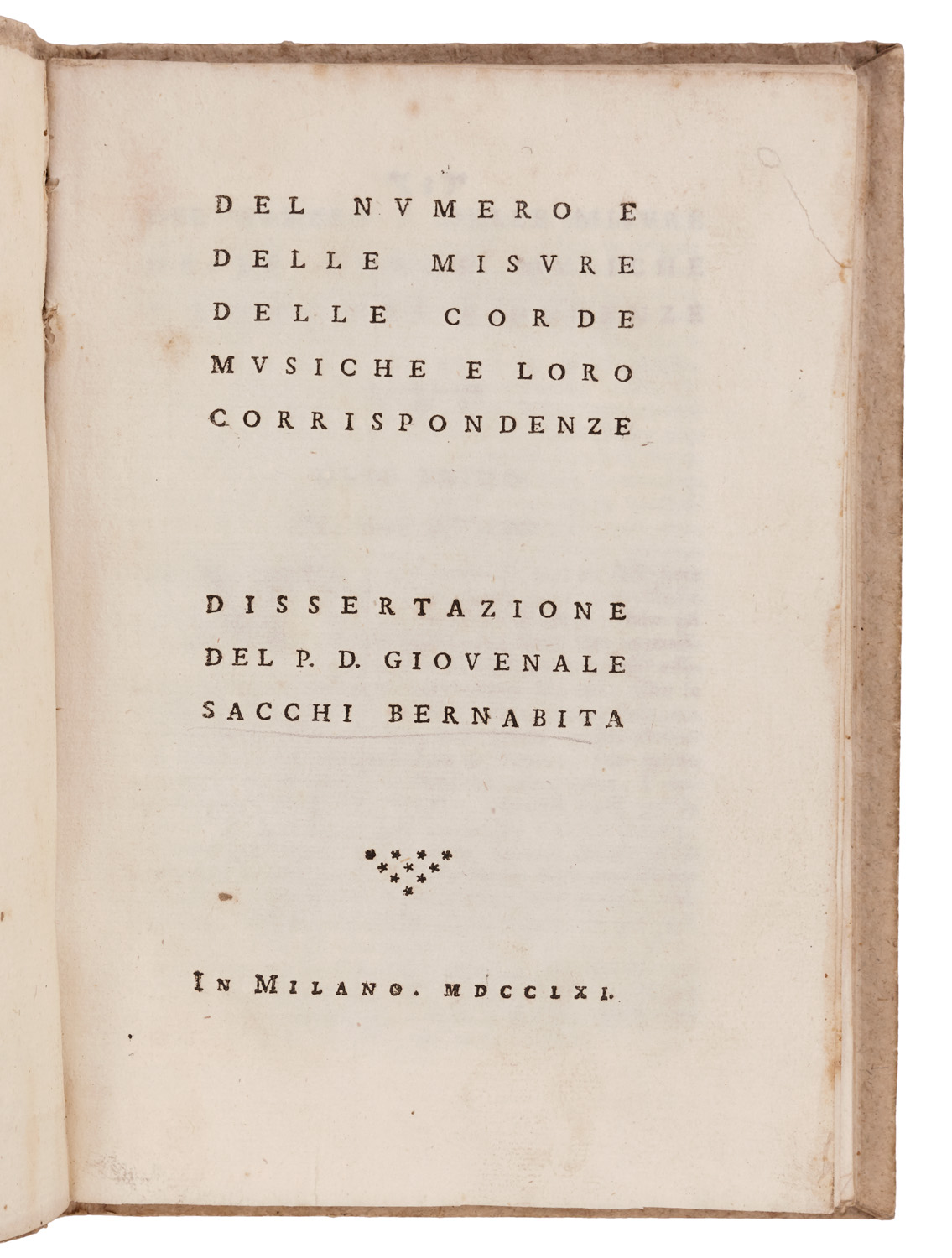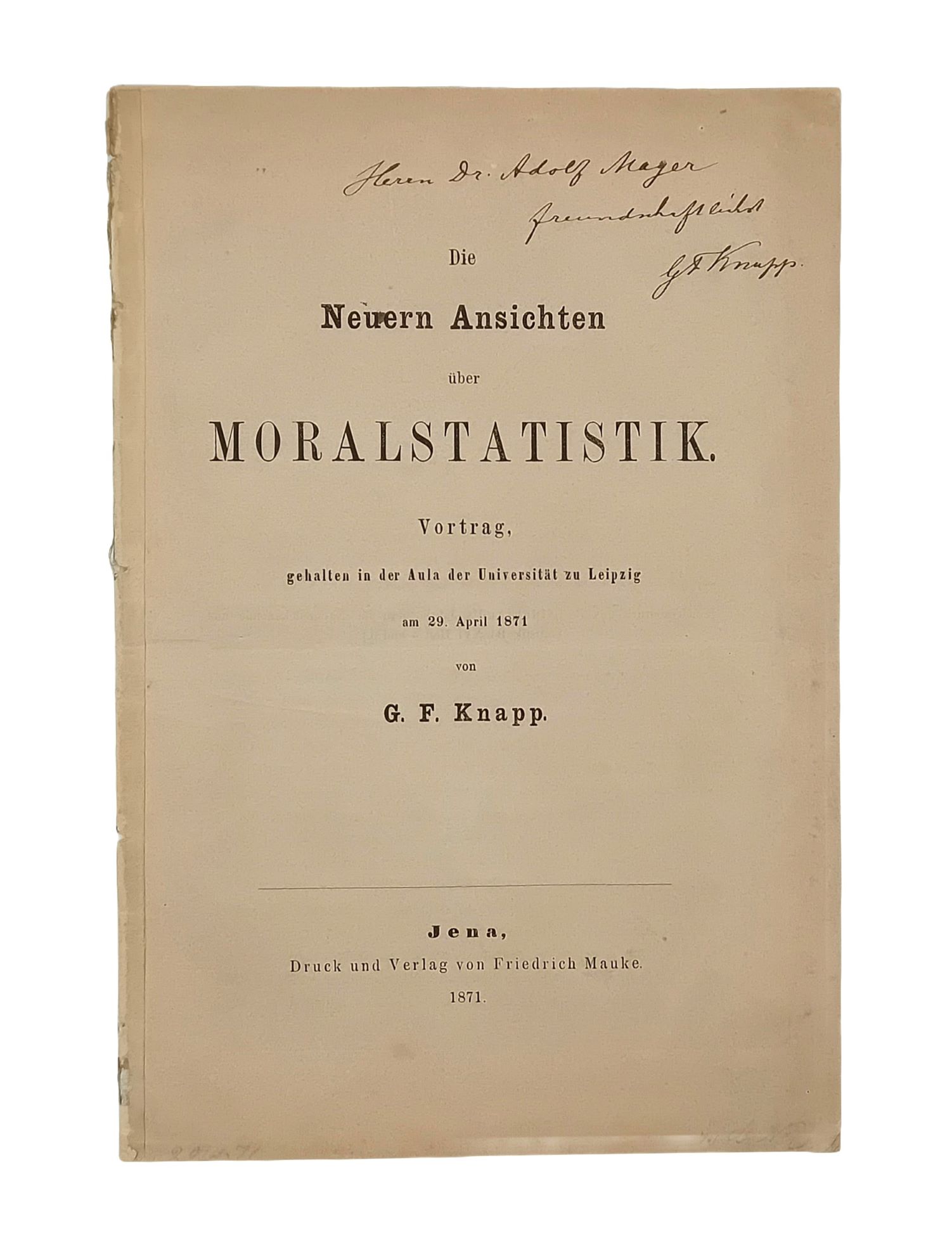RIEMANN, Georg Friedrich Bernhard.
Ein Beitrag zu den Untersuchungen über die Bewegung eines flüssigen gleichartigen Ellipsoids.
Göttingen, Dieterichsche Buchhandlung, 1861.
4to, pp. 36; title recto and last leaf verso minimally dusty; lower corner of title chipped; a very good copy; stitched as issued and with contemporary paper back-strip; the back-strip repaired.
Added to your basket:
Ein Beitrag zu den Untersuchungen über die Bewegung eines flüssigen gleichartigen Ellipsoids.
the very rare offprint issue from the abhandlungen der königlichen gesellschaft der wissenschaften zu göttigen of riemann’s classic paper on rotating liquid ellipsoids, containing solutions of the equations of fluid dynamics that were later applied to the physics of rotating stars by chandrasekhar and lebovitz.
‘Continuing work of Dirichlet, in 1861 Riemann studied the motion of a liquid mass under its own gravity, within a varying ellipsoidal surface, a problem that has been the subject of many works. One of Riemann’s classic results deals with the stability of an ellipsoid rotating around a principal axis under equatorial disturbances’ (DSB).
In spring, 1964, ‘Chandra was invited … to speak at the Courant Institute in New York City when, browsing during an hour of leisure in Stechert’s bookstore, he chanced upon a copy of Bassett’s Hydrodynamics (Bassett 1888), and purchased it … Bassett’s book contains an account of the Riemann ellipsoids, discovered and discussed by Dirichlet, Dedekind and Riemann in the period 1857–1861 – long before the work of Poincaré and others on the Jacobi ellipsoids, but barely alluded to in their work, and unknown to Chandra until he looked into Bassett’s book. The Riemann ellipsoids represent a substantially more general family of solutions of the equations of the fluid dynamics of selfgravitating figures than those presented by the Maclaurin and Jacobi families, and their properties had been much less fully explored. On the one hand, one’s understanding of the possible figures of self-gravitating masses and their stability was evidently much narrower than it could be – and should be – and, on the other hand, he now had sufficient technique to bring the understanding of these more general ellipsoids to the point of development that had been achieved for the Jacobi and Maclaurin families. He resolved to bring this beautiful but neglected theory to a fuller stage of completion’ (Norman R. Lebovitz, The Virial Method and the Classical Ellipsoids, in Astrophysical Journal, vol. 17 (1966), p. 168).
OCLC gives two US locations, at the Smithsonian, and Columbia. These appear to be of the journal issue.
S1012

